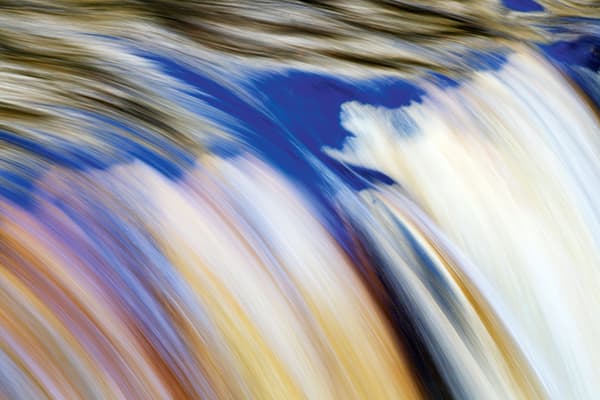
You can create Impressionistic shots of flowing water where the whole image is a pleasing blur
Movement has always played a big part in my landscape photography. The ripples in a river, waves crashing on the shore and the wind in the trees all serve to create an element of abstraction, from the subtle movement of the end of a branch to the completely Impressionistic close-up of a fast-flowing waterfall where the whole photograph is a blur.
From using the natural movement of subjects to produce abstract images, it’s just a short step to introducing your own intentional camera movement (ICM) into an otherwise static landscape. Aided by digital cameras (and huge storage cards), the freedom to experiment with movement in photography has never been greater.
You can shoot moving water at every shutter speed you have available if you so wish, or you can take the camera off the tripod and try a variety of different panning movements to achieve the effect you want. Not only does this give you a break from the constraints of working with a tripod for a while, but it’s also fun!
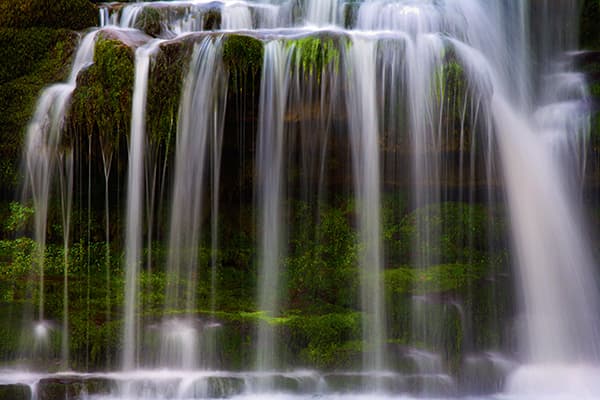
Moving water makes a great subject on an overcast day
Camera movement
When working with camera movement, subject choice is critical – you can’t just pan your camera while pointing it at any collection of objects and expect to achieve a great abstract image.
The key to success is recognising the kinds of subjects that will respond well to this kind of treatment. Strong colours and bold lines are the things to look for. A group of parallel tree trunks can work well with a vertical movement of the camera or a landscape with flower-filled fields below a sky with interesting cloud shapes for a horizontal pan along the horizon.

The strong verticals of tree trunks make a fitting subject for fast, vertical camera movement
A good starting point may be a visit to an art gallery to look at some Impressionist paintings where the portrayal of an overall visual effect takes precedence over fussy detail. It’s interesting that the development of Impressionism can be attributed in part to the development of photography, which challenged artists’ depictions of reality, so perhaps now the ubiquity of photography is pushing photographers in the same direction.
I am particularly attracted to the contemporary style of seascape painting where the subject is just sea, shore and sky (Google ‘modern seascape paintings’ and you should see what I mean). This was the source of inspiration for a series of my own seascapes on the Yorkshire coast at Whitby one summer. After enjoying fish and chips on the pier, I set up for a sunset shoot. The pier itself is a good subject, but my mind soon turned to the idea of abstract seascapes. So I took the camera off the tripod and used a handheld horizontal pan to capture light glinting off the waves as the sun set.
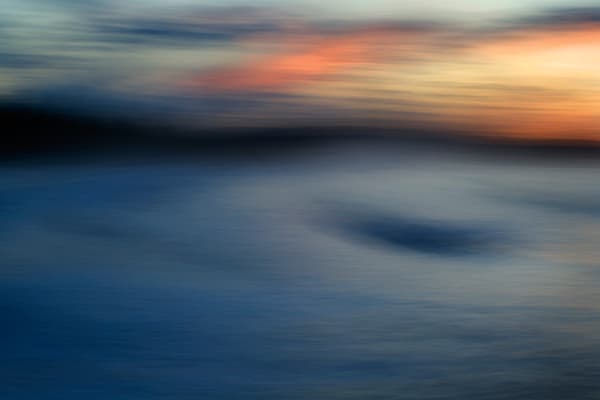
Seascapes lend themselves best to horizontal camera movement
This produced some pleasing effects, but once the sun was below the horizon, the best images were to be had across the bay with pink twilight over a sea reflecting deep blue-hour colour. I would normally pick a slowish shutter speed (around 1/8sec or 1/15sec) and make one long fast horizontal sweep of the camera, but here I chose a shutter speed of 2 or 3secs and moved the camera from side to side in a shape mimicking the ebb and flow of the waves. Here, the technical settings are less important than the speed and shape of the movement you make.
While seascapes and big wide landscapes probably lend themselves best to horizontal movement, in woodland it’s likely to be the strong verticals of the tree trunks that lead you to making a fast vertical movement of the camera to produce stripes of colour.
Here, the key to success is to frame up the composition you have in mind, half depress the shutter, release to focus and take your exposure reading from this position. Then move the camera upwards and sweep it quickly downwards, releasing the shutter as you reach the original position. You may need to practise to get this technique just right, especially if there’s an expanse of open sky behind the upper part of the trees, as you’ll want to exclude this from the frame to avoid burnt-out patches at the top.
Camera movement can even out the distribution of tones across your image, so the result may look a bit flat on the back of the camera – check the histogram and you’ll probably see it’s very compressed.
If this is the case, pull in the black and white points in post-processing to get the data to fill the full tonal range.
Subject movement
Of course, there’s plenty of naturally occurring movement in the landscape, so you don’t always have to introduce your own. Waterfalls are the obvious choice and moving water makes a great subject on an overcast day when the diffused light won’t give any problems with highlights. Here, a sturdy tripod ensures the static elements of the shot stay crisp, which means you can pick whatever shutter speed you like to achieve optimum blur in the moving water.
There’s no strict rule for this, as it depends on how fast the water is moving for one thing, but I generally favour a slowish speed around 1/8sec or a bit slower. Where the natural movement is somewhat slower, such as water lapping in and out of an inlet along the bank of a river away from the main flow with foam or leaves following the slow-moving eddies in the water, then a longer exposure may be needed to bring out the movement fully.
I tend not to use ultra-long exposures for waterfalls as the detail in the surface of the water disappears, but for seascapes a very long exposure can be a useful technique. You may consider using an ND filter to achieve the exposure you want, or shoot in fading twilight on a clear day in order to get the deep-blue sky reflecting off a glass-like sea.
Man-made subjects can also provide an interesting source of movement, such as a fast-moving train crossing a viaduct or a bright-red bus against a contrasting background. You may also be able to predict when they’re going to present themselves. Back at Whitby Pier after my sunset shoot, I waited for the ‘Twilight Cruise’ to depart, having seen an advert for it on the quayside. The streaks of light as the boat left the harbour made an unusual movement image, which was a lovely way to round off an evening’s photography.
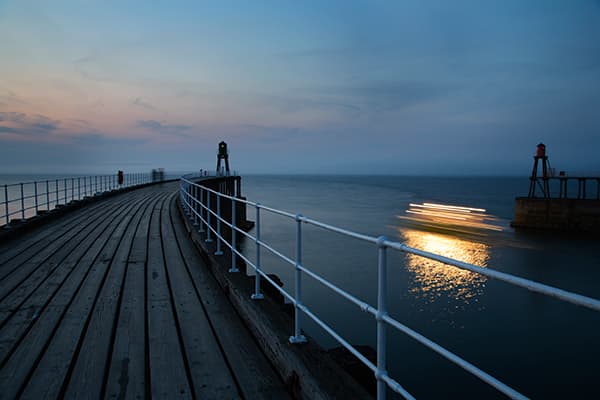
Streaks of light created by a boat leaving Whitby Pier made for a pleasing shot
Kit list
Zoom lenses

A couple of zoom lenses giving good coverage of focal lengths should suffice. I tend to use a Canon 24-105mm and Canon 70-200mm.
Tripod
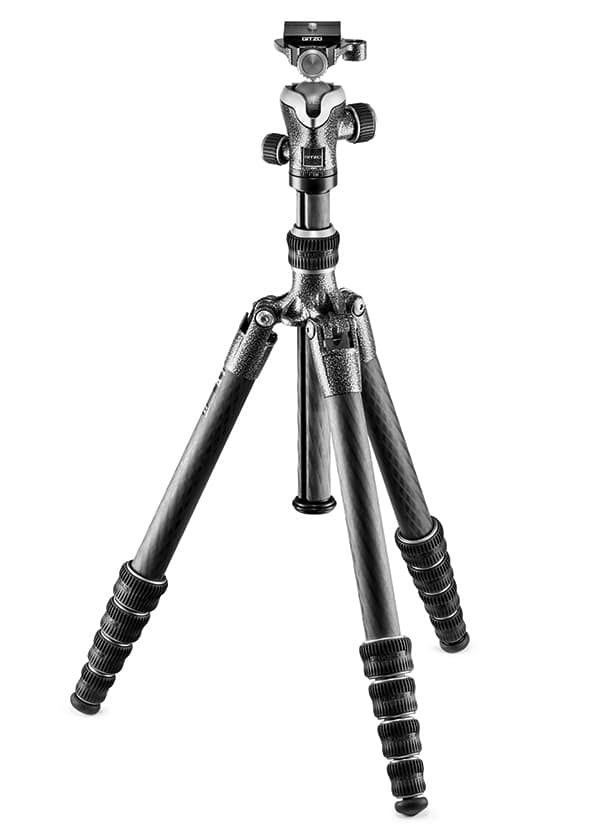
A tripod is essential for long-exposure shots. A pan-and-tilt head may be useful for intentional camera movement (I use an old Gitzo model), although I tend to work handheld for this technique.
ND filters
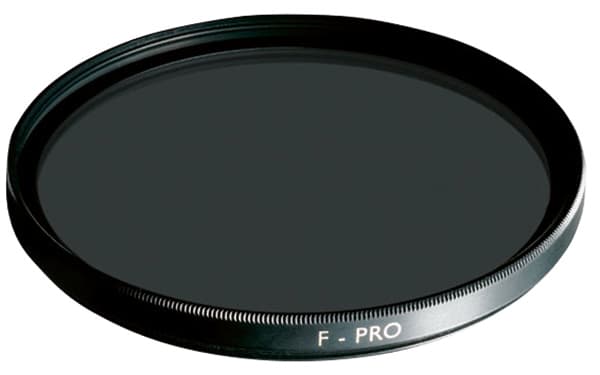
For long exposures, a neutral-density filter can be handy. I prefer to use natural light if possible, but I also carry a B+W 10-stop filter for my main zoom lens just in case.
Spare batteries
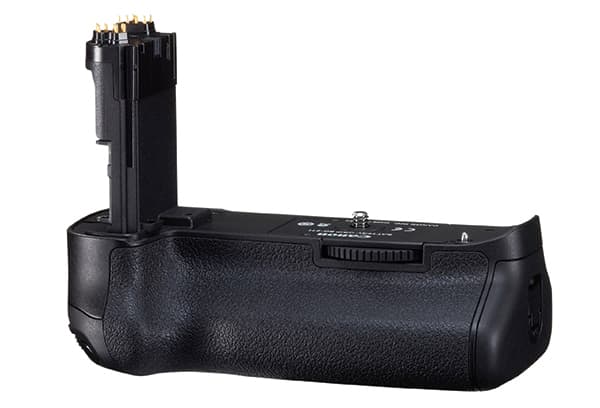
With intentional camera movement you could be experimenting with lots of exposures all day long; make sure you don’t run out of power.
Lens cloth

If you’re working close to a raging torrent of water, then spray can be a problem, so make sure you have a lens cloth to hand to keep the front element of your lens clean.
Alternatives: Shutter speed choice
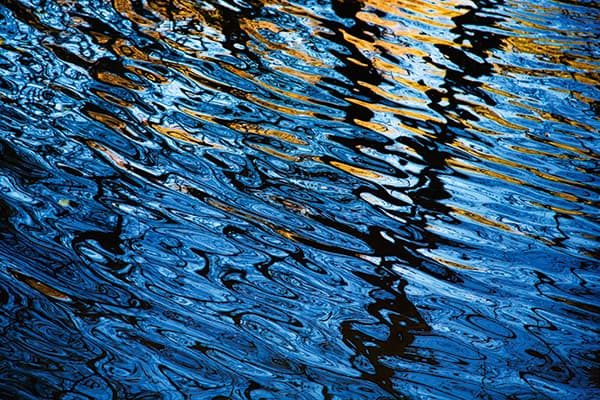
1/500sec

1/500sec
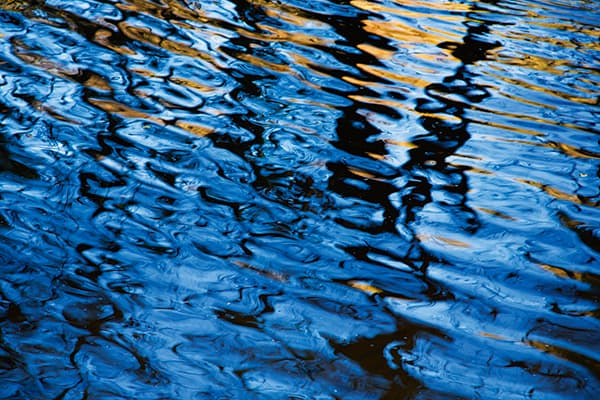
1/15sec
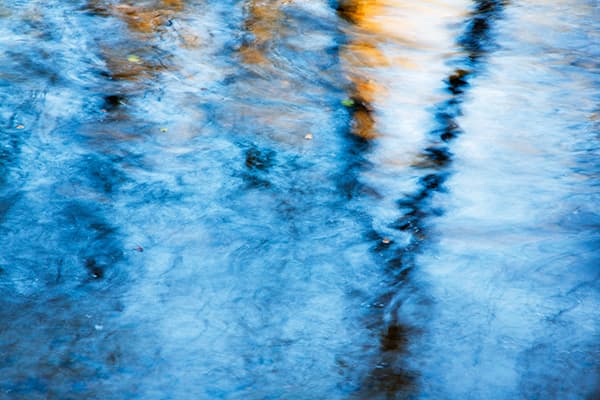
1sec
I’m often asked what the optimum shutter speed is to make a realistic image of moving water, but I don’t think there is one, as all still images of moving water are abstracted in some way (to be realistic, I think I’d have to shoot a video instead). What can be surprising, though, is just how much difference the shutter speed can make to the resulting image. This shot of reflections in the River Wharfe at Bolton Abbey was set up with the camera on a tripod, so each is exactly the same subject and composition.
The first is shot at 1/500sec, so there’s little blur with the ripples on the surface frozen, but the result still looks quite abstract.
The middle image was shot at 1/15sec, so there’s more blur, but the shapes and ripples are still discernible. In the final image, the shutter speed was 1sec and the detail of the ripples in the surface is lost, producing a more abstract image.
Before and after: Simplifying a complex landscape

Before.
Intentional camera movement suits subjects with strong colours and bold lines
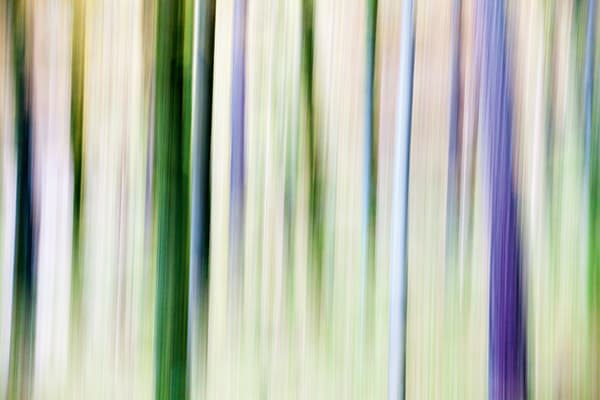
After.
The trunks of the pine trees had a lilac hue that was ideal for ICM
This woodland near Grange in the Lake District provided an ideal opportunity for intentional camera movement (ICM), with nice parallel trunks and a good mix of deciduous and pine trees adding interest to the scene. The pine trunks often have a lilac hue, which really comes to the fore with ICM, and the older mossy tree trunks provided a nice colour contrast.
The static shot was a lengthy 1.6secs at f/16 and ISO 100, so I upped the ISO to 200 and opened up to f/8 for a more manageable 1/13sec to make the fast vertical sweep shot. I love the way the technique produces a much simpler image, removing all the complexity from the landscape and concentrating on colour and form.
Top Five Tips
Keep it simple
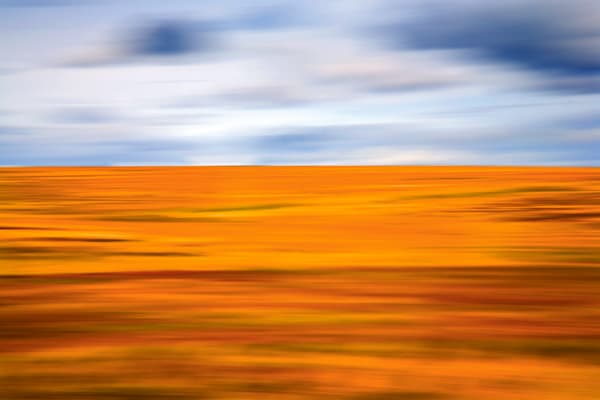
Simplicity of composition is the key to ICM images. Bold horizontal lines work well in the composition here, but you’d probably want to avoid a strong vertical element, like a tree cutting through the horizon in this case, as it could produce a confusing result.
Be bold
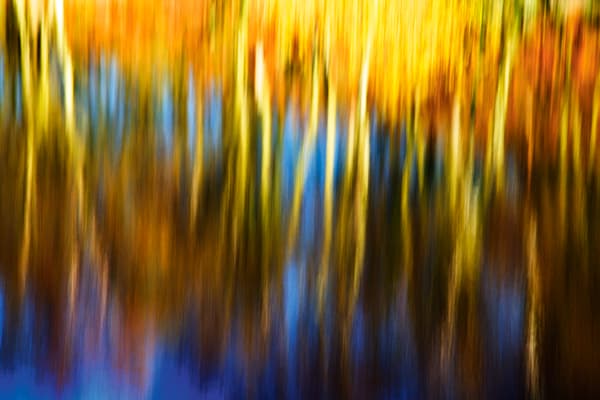
Moving the camera may seem counterintuitive, as we’re all trained to keep it as still as possible, but don’t be tentative with your movements as you want to get a lot of blur – otherwise your result may look more like camera shake than the fine abstract image you had in mind.
Experiment
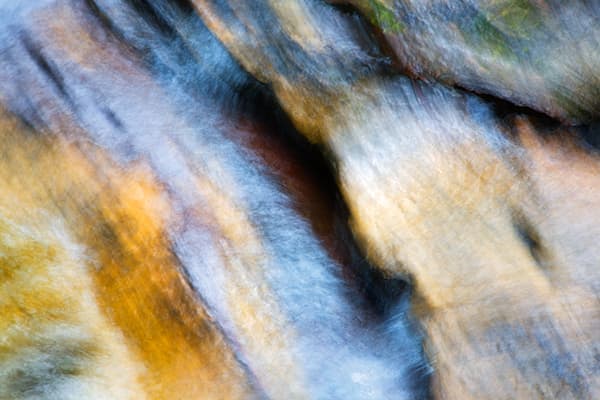
Don’t be afraid to experiment, as it’s not just a case of getting the right exposure set up and taking the shot – try different amounts and directions of movement and gather a set of images from which to pick the best one. Selection can get a bit tricky, though.
Work with the light
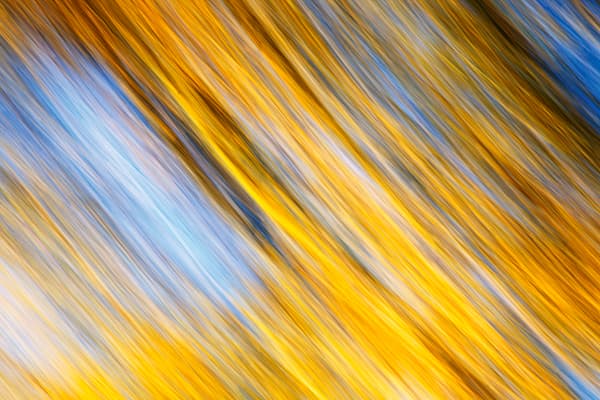
Diffused light is generally best for moving water and woodland photography. As with static images, good early and late light is best on ICM shots of open landscapes. Saying that, strong sunlight on foliage can also work, especially backlit against a blue sky, as in this image.
Combine both techniques
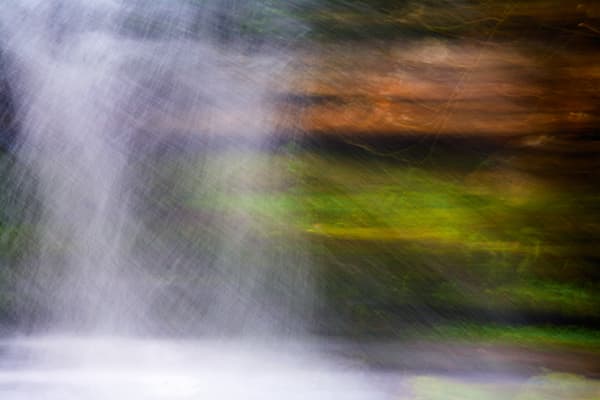
Try combining camera and subject movement in the same image. You can move the camera vertically in line with the flow of water in a waterfall, for example, or even horizontally at right angles to the flow to produce an unusual criss-cross pattern.
Mark Sunderland

Mark is a landscape and travel photographer based in North Yorkshire, who specialises in images of Yorkshire and the UK in general. He also runs photography workshops in the Yorkshire Dales. To see more, visit www.marksunderland.com and natural-light-workshops.co.uk.







